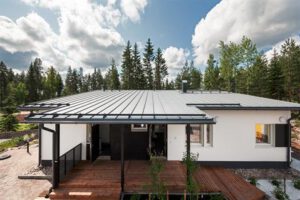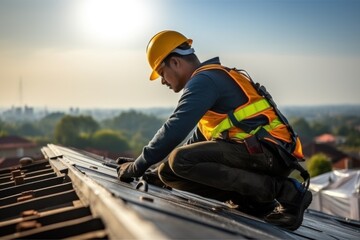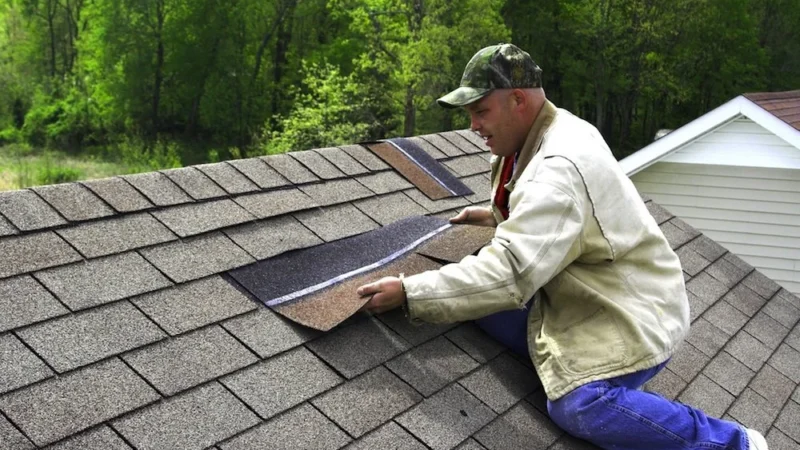Why Choose Flat Roofing
Flat roofs are commonly found on residential and commercial buildings and are constructed from wood, steel, or concrete and usually have a barrier to prevent water from entering. Early western homes had sloped roofs, but flat roofing construction first took hold in arid climates, where it was commonly used. In the mid-1800s, flat roof construction began, and pine tar and gravel were used to cover the roofs. By the 1920s, flat roofing became popular.

Roofing Companies offer various flat roofing coatings, including EPDM rubber. This material is the most common type of membrane for flat roofs. EPDM rubber is sourced from rubber trees, making it a highly water-resistant membrane that is also very durable. EPDM rubber has the highest lifespan and is best suited for commercial buildings. However, these roofs are relatively expensive, so it is not a good option for all types of residential properties. If you are looking for a flat roof solution, you should consult a local contractor experienced in roof repair.
Your home’s exterior is incomplete without roofing. Many traditional roofing materials are long-lasting and inexpensive, but there are many modern options. Green roofs can be attached to existing roofs to save money and energy. Modern green roofs are adaptable to fit modern designs and becoming more popular as a way of “greening” the Earth. Soil and vegetation can also act as insulation to reduce building temperatures.
A flat roof can be cheaper than a pitched roof. It doesn’t require as much labor or risk for the contractor. As a result, the cost of flat roofing may be lower in the long run. Flat roofing is cheaper than a pitched roof depending on the materials used. Moreover, flat roofs are less expensive to maintain than their pitched counterparts. There are also fewer complications associated with water drainage on flat roofs, which makes them a good choice for homes in high-wind regions.
Modified bitumen is another type of roof coating. It is made of two or three layers of bitumen sheets, which are applied by torch. It is light-colored and reduces the need for air conditioning. However, this type of roofing is hazardous to apply. Therefore, it is better to avoid occupied buildings, unless the area is completely dry. During installation, safety measures must be followed to prevent any accidents. This type of roof should be protected from the weather and from the sun’s ultraviolet rays.
If you want a durable roof, you can choose to install a single-ply membrane. This type of roofing uses rubber and other durable and waterproof materials. The top layer is a reflective white or gray color. The material’s topcoat will eventually wear off, exposing the polyurethane foam underneath. It can last for decades, but it will cost you some money. It can also be noisy during storms and may not withstand hail.
Regular inspections of your roof are necessary to avoid major issues. You should schedule a professional roof inspection at least every two years. Inspecting your roof’s drainage system is a good way to keep water from getting in and damaging your roof. Regularly inspect and clean your roof’s drainage system to prevent excessive pooling. If debris has piled up on your roof, you should consider repairing it. The water in the drainage system can freeze and cause damage to your building, so it’s important to clean it regularly.
Another way to reduce your energy bills is by choosing a cool roof. Cool roofs reflect visible, infrared, and ultraviolet rays of the sun. By doing so, they release absorbed solar energy. These roofs can be inherently cool, green roofs, or coated with a cool material. In addition to being cooler than traditional roofs, cool roofs can improve your home’s overall comfort and decrease your carbon footprint.
A built-up roof system uses multiple layers of roofing felt and reinforced fabric. The top layer is gravel, which protects the layers below and helps reflect the sun’s rays. Although the cost of a built-up roof is higher, it is less likely to leak or damage. It is not a DIY project, as it requires specialized tooling and a strong roof structure. The more layers, the heavier the roof will be.





